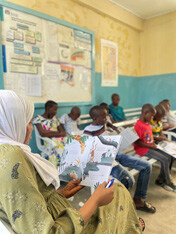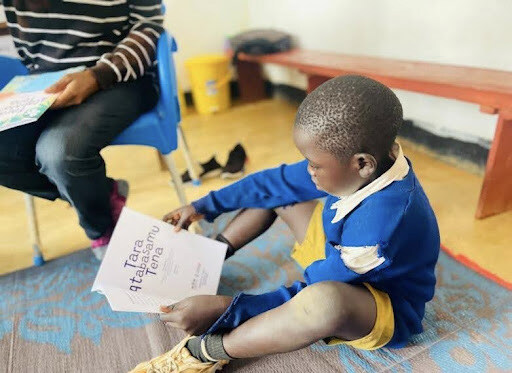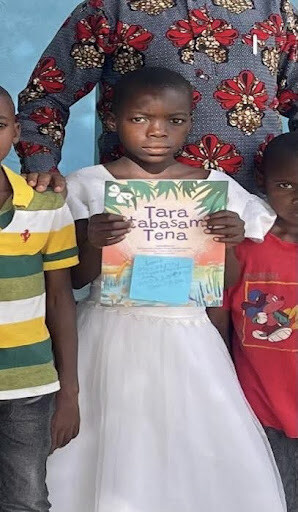In Tanzania, children living with HIV face unique challenges in understanding their condition and the importance of adhering to antiretroviral therapy (ART). Many children, especially those under 10, struggle with complex HIV terminologies and the importance of their treatment. This lack of understanding often leads to poor adherence to ART, which is critical for viral suppression and maintaining good health. Additionally, the conventional methods used to educate children on HIV and ART were not engaging enough to make the information memorable and impactful.
The USAID Afya Yangu (My Health) Northern Project embarked on a journey to address the complexities surrounding HIV and ART understanding and management. Recognizing the critical role of human-centered design (HCD) the project initiated a comprehensive process that began with immersion interviews in the Dodoma and Manyara regions. Through these interviews, we gained deep insights into the lives of children living with HIV, their caregivers, and the healthcare providers who support them.
This phase helped us understand the gaps in knowledge and the barriers to effective HIV education for children, as one Healthcare provider from Makole said:
“Ensuring that children maintain good adherence is a bit challenging, especially if the parent is not attentive. This is because the child’s understanding of HIV, or even just remembering that they need to take their medication, is often limited”.
Building on the insights from the immersion phase, we conducted a workshop in the same regions, involving 40 participants from each area. The workshop was designed to test the concept of a storybook as an educational tool for children. The participants, including healthcare providers, caregivers, and children, provided valuable feedback that guided the refinement of the storybook.
Tara Atabasamu Tena: The Story
Tara Atabasamu Tena, a storybook which is written in the traditional Tanzanian storytelling style, tells the life cycle of HIV in a human body and explains how ART can interrupt this process.
The aim was to create an easy, fun, and memorable way for children to understand the importance of taking their medication consistently and correctly.
Before rolling out the solution, we tested the storybook prototype in Dodoma and Manyara regions. The feedback from these tests led to the inclusion of colorful illustrations and interactive elements that made the story more engaging for children.
The final rollout of the Tara storybook took place at selected health facilities in Dodoma and Manyara. We introduced the storybook to 54 children receiving ART services. The sessions were interactive, involving games, songs, and storytelling, which resonated deeply with the children. One child commented,
“The story does not make you cry like other stories; it shows us we can win against HIV and live happily”.
The Response
Healthcare providers like Ms. Habila Jafary Sanda, a counselor at St. Gemma Hospital, observed the positive impact of the storybook. She noted how the interactive nature of the sessions kept the children engaged and how the storybook could potentially improve ART adherence among children.
“I believe this solution will help us get more kids to come because they know that they will be singing and enjoying the session,”
The children themselves were excited about the storybook, with many expressing their understanding of HIV and the importance of ART. They particularly enjoyed the character of Swala, who helps Tara, and the catchy song that reinforced the key messages of the story.
One child said: “I love how Swala helped Tara,” while another mentioned, “I liked how it was revised. I remember pictures didn’t have any color at the beginning, but now the colors are nice, and the pictures look good.”
At St. Gemma Hospital, we met an 11-year-old girl living with HIV who showed a remarkable memory for the “Tara” story, which she first heard during a session two months prior. Although she couldnʼt write her own name, she vividly recalled key parts of the story, indicating its strong impact on her. With repetition and proper guidance, she confidently stated that she would never forget the story and could share it with others. When asked to recount the story, she shyly stood up and said,
“All I remember is there is a river called Tara that encountered a problem, and its friend, Swala, went to visit Shujaa, who gave him medicine—I forgot the name of the medicine. And when Swala returned, Tara took the medicine and was okay from that day on. They also had a song, but I don’t remember it.”
Despite her initial hesitation, the young girl’s ability to recall the key elements of the story was remarkable.
Long-Term Effects
The story demonstrated the power of using culturally relevant and interactive educational tools to enhance understanding and adherence to ART among children living with HIV.
By engaging children in a way that resonates with them, we were able to make the complex subject of HIV more accessible and relatable. This success story highlights the importance of involving the community in developing solutions and ensuring that educational tools are not only informative but also enjoyable and memorable for the children who need them most.
From the American People with support from the U.S. President’s Emergency Plan for AIDS Relief, through USAID.






